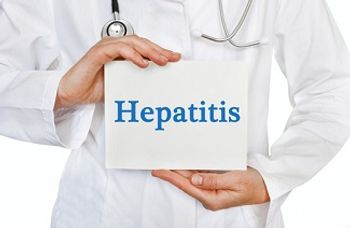
Incidence of MIS-C with COVID-19 Higher Among Racial and Ethnic Minority Groups
Children infected with SARS-CoV-2 who are Black, Hispanic or Asian have a greater risk of developing the rare multisystem inflammatory syndrome, a new study found.
Multisystem inflammatory syndrome is rare in children infected with SARS-CoV-2, but more common among those who are Black, Hispanic and Asian, a new study determined.
The study, published in
“Multisystem inflammatory syndrome in children (MIS-C) is a rare but serious complication associated with COVID-19 – we found that it occurs in about 316 per million SARS-CoV-2 infections in persons younger than 21 years,” Angela Campbell, MD, MPH, and Amanda Payne, PhD, MPH, of the COVID-19 Response Team, Centers for Disease Control told Contagion. “This is about 0.03% of SARS-CoV-2 infections, or another way to think of this is about 1 case of MIS-C per approximately 3,200 SARS-CoV-2 infections in persons younger than 21 years.”
The study found that the incidence of MIS-C was higher among younger children and among minorities.
“The goal of this study was to estimate the rate of MIS-C cases in the general population and to estimate how many people under the age of 21 who were diagnosed with COVID-19 ended up developing MIS-C. The most significant finding from this analysis was that both of these estimates were higher among children from racial and ethnic minority groups,” Campbell and Payne said.
The study analyzed MIS-C incidence per 1 million person-months and per 1 million SARS-CoV-2 infections. Of 248 people with MIS-C included in the study, 96 (38.7%) were Hispanic or Latino, 75 (30.2%) were Black and the median age was 8 years. Incidence of MIS-C per 1 million person-months was about 9-fold higher among Black patients, with an adjusted incident rate ratio of 9.26 (95% CI, 6.15-13.93) and Hispanic or Latino patients (aIRR, 8.92 [95% CI, 6.00-13.26]) and 3-fold higher among Asian or Pacific Islander patients (aIRR, 2.94 [95% CI, 1.49-5.82]) than White patients.
Incidence per 1 million SARS-CoV-2 infections also was significantly higher among Black (aIRR, 5.62 [95% CI, 3.68-8.60]), Hispanic or Latino (aIRR, 4.26 [95% CI, 2.85-6.38]), and Asian or Pacific Islander persons (aIRR, 2.88 [95% CI, 1.42-5.83]).
Incidence of MIS-C also was highest among younger children, with those aged 5 years or younger seeing an adjusted incidence rate ratio of 4.9 per 1 million person-months [95% CI, 3.7-6.6] and children aged 6 to 10 years seeing an incidence of 6.3 [95% CI, 4.8-8.3] children per 1 million person-months compared with 0.48 (95% CI, 0.31-0.74) among those ages 16 to 20.
“Clinicians and health care providers that provide care to pediatric populations should be aware of the increased incidence of MIS-C among children from racial and ethnic minority groups,” Campbell and Payne said. “CDC has
“Although fewer children have been infected with COVID-19 compared to adults, children can be infected with the virus that causes COVID-19, get sick, spread COVID-19 to others, and as this research indicates, can develop serious complications like MIS-C,” Campbell and Payne said. “Everyone 12 years and older are now eligible to get a COVID-19 vaccination to help protect against COVID-19. Widespread vaccination is a critical tool to help prevent COVID-19 illness and associated complications and help stop the pandemic.”
Investigators are continuing to learn about the risk factors for MIS-C, and further research is needed to understand why racial and ethnic minorities may be at greater risk.
“We know that long-standing health and social inequities are putting many people from racial and ethnic minority groups at increased risk of exposure, illness, hospitalization, and death from COVID-19,” Campbell and Payne said.
Aggressive treatment has kept the fatality rate low among children infected with SARS-CoV-2 who have MIS-C, a
Newsletter
Stay ahead of emerging infectious disease threats with expert insights and breaking research. Subscribe now to get updates delivered straight to your inbox.
















































































































































































































































































